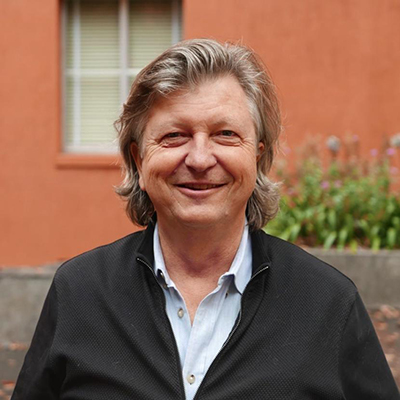Radical Imagination in Niklaus Largier’s Figures of Possibility

In his new book, Figures of Possibility: Aesthetic Experience, Mysticism, and the Play of the Senses (2022), Niklaus Largier discusses what he calls “figures” — which range from psalms to music to images — in the medieval contemplative tradition that impact sensory and emotional experiences. In a recent Berkeley Book Chat at the Townsend Center, Largier, a professor of comparative literature and German at UC Berkeley, spoke about the way that these figures resist interpretation and instead constitute a mainly sensory experience. These qualities lend figures tremendous power over human imagination, a fact that Largier says has important ethical and political implications.
Largier’s approach to figures focuses upon the way that they result in defamiliarization and “disrupt [usual ways of] making sense.” He is interested in the effects of the language itself and the ways that these effects are amplified through various rhetorical devices — the singing of a psalm instead of the speaking of it, for example. This framing works in opposition to the way that figures are often considered. Usually, Largier said, people who study these contemplative traditions are driven to find connections or allegories between figures and religious texts. By focusing on figures as spaces of sensory experience, Largier is able to think about their impact on what he called the “landscape of the soul.” The figures that he writes about impact this landscape, and impact people sensually, affectively, and cognitively. Their foregrounding of aesthetic experience over the impulse to interpret allows them to suspend us outside of our normal state. In Largier’s words, they “re-weave perception.”
This space of suspension is also a space of experimentation, a place where the formal and aesthetic elements of figures can produce surprising effects. Largier spoke about “striking” moments of enchantment and wittiness that result when unexpected elements or quotations are brought into relation with each other. These moments have a “plastic effect.” They mesmerize the reader or listener and keep them from jumping straight into interpretation. By suspending people in moments of pure experience, Largier argued, figures make space for new possibilities distinct from our normative judgements.
As he spoke about possibility, Largier made sure to distinguish it from potentiality. An apple seed, he said, has the potential to grow into an apple tree. Potentiality is a straight line. Possibility, on the other hand, is far more open-ended. It is this open possibility, and the way that it undermines the space of historical determination that we inhabit, that lends Largier’s work political and ethical significance. Largier talked about the connection between his figures and ideas about utopia — not a concrete utopian design, but instead a space of shifting, a sprouting point for countless unrealized possibilities.
In opening ourselves up to possibility through aesthetic and sensory experience, Largier suggested, we can find our humility and undermine our collective reliance on hierarchical constructs. We can discover “relations that have not been thought yet.” There is an element of dispossession here too, of self-emptying. Largier referenced Foucault as he spoke about the “overdetermined” nature of the world and our perceptions of it. Figures can bridge gaps between our various determinations of how the world is structured. Largier emphasized this in his response to a question about whether those raised in more secular cultures or environments will have trouble interacting with figures. Their power is located in their affective and sensory impacts, not in the experience-er’s participation in any particular orthodoxy. In fact, their push away from meaning and towards experience and experimentation positions them in opposition to orthodoxies. Figures, according to Largier, are the “realm of the imagination,” the place where people can participate in the “material shaping of everything.” They provide access to the “ground of our existence,” where we can access — and influence — the “material and spiritual becoming shared by all things.”
Figures can help us set aside our preconceptions about the ordering of things, and find a space of possibility within ourselves that we can apply to our views about, and actions in, the wider world. This is an encouraging thought in a time when the grooves of historical oppression and violence seem as though they are being ever retraced and ever deepened. Figures can begin a process of healing through undoing; there is space for art and aesthetics to carve out meaningful social change through radical imagination.